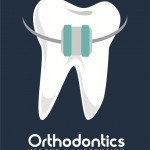
Class II malocclusion affects around one in four of 12 years old children in the UK. Both fixed and removable functional appliances have to be used for treatment. The aim of this review was to assess the treatment effects of fixed functional appliances (FFAs) in the treatment of class II malocclusions.
Methods
Searches were conducted in a wide range of digital resources, PubMed, Embase, the Cochrane databases of systematic reviews, Cochrane Central Register of Controlled trials, Google scholar Web of Science, Evidence-based Medicine, Scopus, Lilacs, Bibliografia Brasileira de Odontolgogia, Ovid, Bandolier, Atypon Link , African Journals Online, Proquest, Conference Paper Index German National Library of Medicine (ZB MED) and the metaRegister of Controlled Trials.
Randomised controlled trials (RCTs) and prospective controlled clinical trials (CCTs) using lateral cephalometric radiographs for assessment of the clinical effectiveness of FFAs for the treatment of patients with Class II malocclusion in comparison with untreated individuals were considered. Two reviewers extracted data independently with risk of bias being assess with either the Cochrane tool or modified Downs and Black Checklist. The overall quality of evidence for the main outcomes was rated by using the Grades of Recommendation, Assessment, Development, and Evaluation (GRADE) approach.
Results
- 9 studies (1 RCT, 8 CCTs) involving 418 patients were included.
- Only short-term effectiveness could be assessed i.e. immediately after brace removal.
- For skeletal changes FFAs compared to the untreated group induced:-
- A small increase in SNB angle (MD = 0.87 degree/year, 95 % CI: 0.30-1.43)
- Moderate decrease in ANB angle (MD = -1.74 degree/year, 95 % CI: -2.50 to -0.98)
- Small reduction of SNA angle (MD = -0.83 degree/year, 95 % CI: -1.17 to -0.48)
- FFA treatment resulted in significant dentoalveolar and soft tissue changes.
- Long-term effectiveness of FFAs could not be assessed due to limited evidence.
Conclusions
The authors concluded:
According to existing evidence, FFAs seem to be effective in improving Class II malocclusion in the short term, although their effects seem to be mainly dentoalveolar rather than skeletal.
Comments
This review was conducted in tandem with a similar review from the same group looking at removable functional appliances for the treatment of class II malocclusions (Dental Elf – 12th Jan 2015). There was an extensive search of databases and 9 studies were identified only 1 of which was a randomised controlled trial and this was considered to be at high risk of bias. Although the CCTs were not considered to have serious methodological limitations, the lack of randomised studies and the relatively small number of patents included should be taken into account when interpreting the findings. An Earlier review by Perinettiet al (Dental Elf – 10th Oct 2014) and Cochrane review by Thiruvenkatachari (Dental Elf – 7th Jan 2014) are also available.
Links
Zymperdikas VF, Koretsi V, Papageorgiou SN, Papadopoulos MA. Treatment effects of fixed functional appliances in patients with Class II malocclusion: a systematic review and meta-analysis. Eur J Orthod. 2015 May 19. pii: cjv034. [Epub ahead of print] Review. PubMed PMID: 25995359

Class II malocclusions improved with fixed functional appliances? http://t.co/nvDemWckkt
Fixed functional appliances for class II malocclusions? http://t.co/nvDemWckkt
FFAs effective for Class II malocclusion in the short term http://t.co/nvDemWckkt
Fixed functional orthodontic appliances for class II malocclusions http://t.co/nvDemWckkt
Don’t miss – Fixed functional appliances for class II malocclusions http://t.co/nvDemWckkt
[…] Dental Elf -19th Aug – 2015 – Fixed functional appliances for class II malocclusions […]